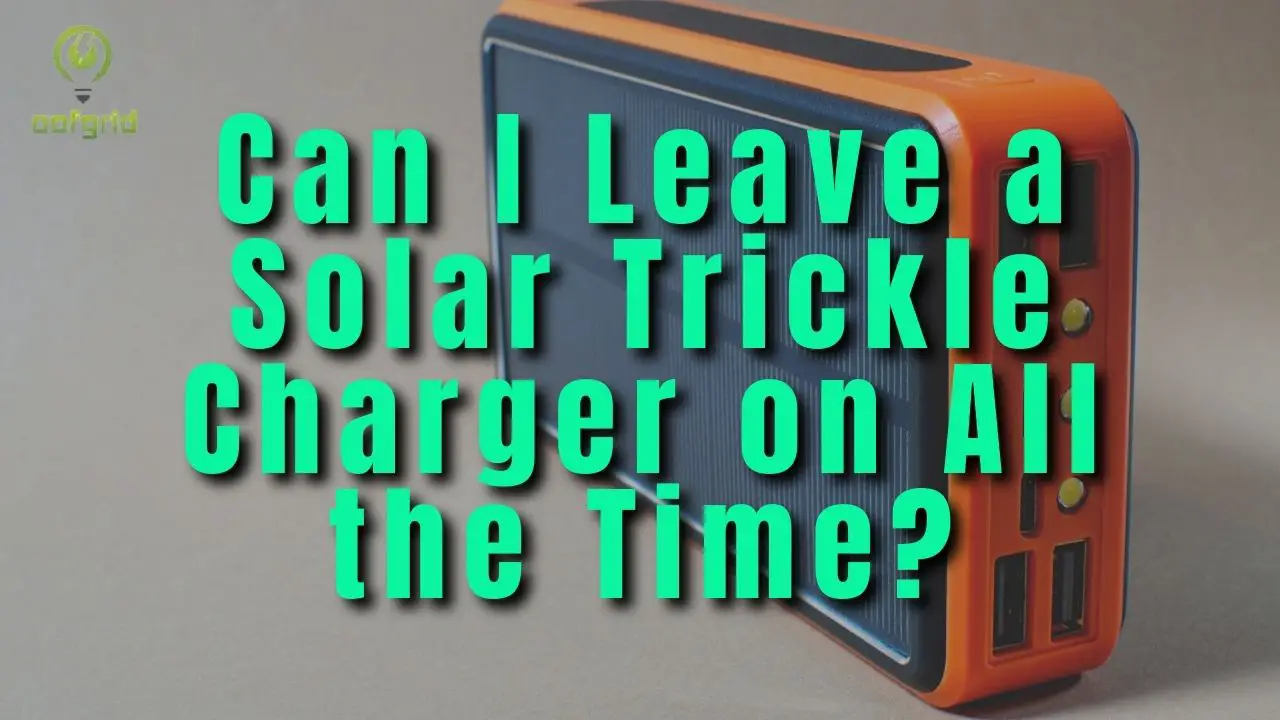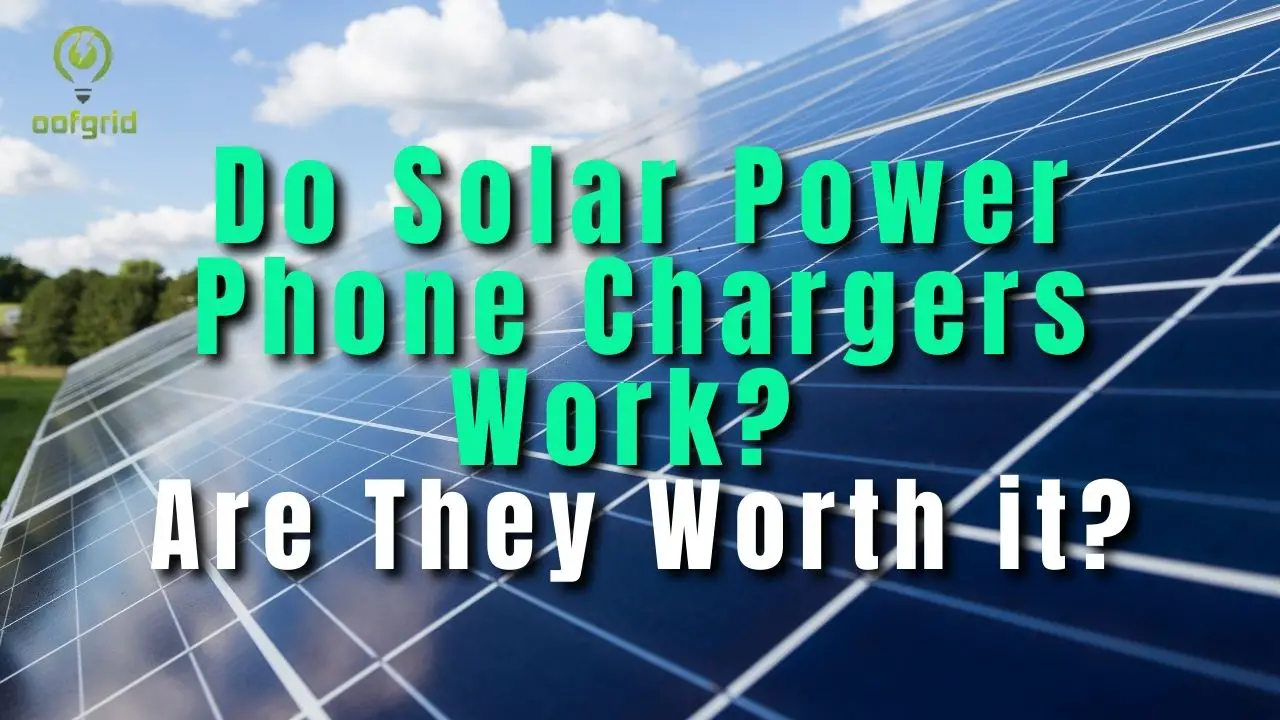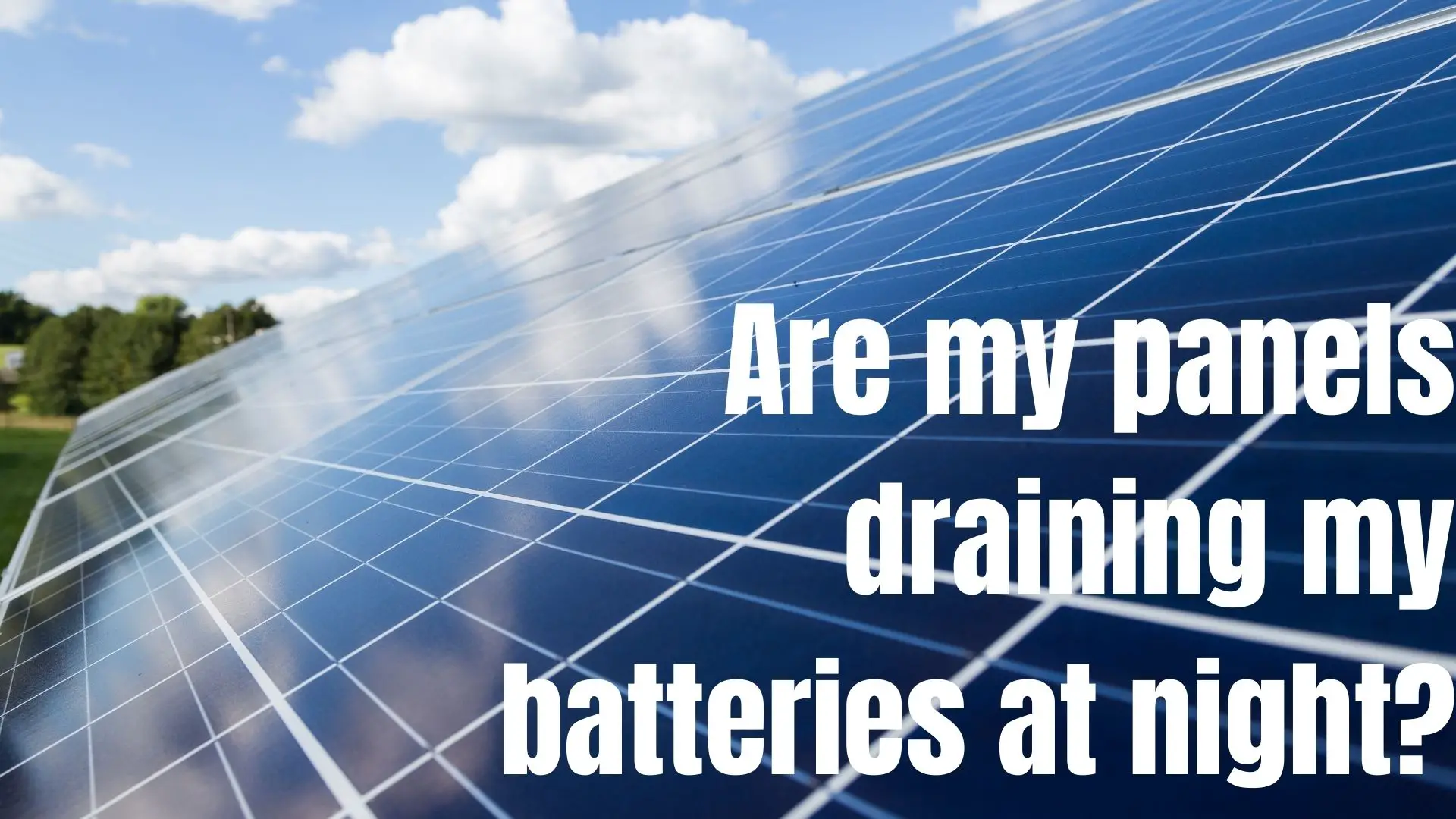Off-grid solar systems usually have solar panels connected to a charge controller connected to a bank of batteries.
Solar power systems can be set up in several configurations. The traditional off-grid system has solar panels, charge controller, battery monitoring system, and batteries.
The solar panels collect the energy and pass it through the charge controller to the batteries. The battery monitoring system displays the charge level of the battery bank.
The charge controller protects the batteries and the solar panels by controlling the flow of energy to prevent the batteries from overloading the panels or the panels overcharging the batteries.
When the charge controller gets the signal that the batteries are full, it will stop the flow of electricity to the batteries.
Overcharging shortens the life of batteries very quickly, and since the batteries are usually the most expensive part of a solar setup, this is an important safety feature.

Contents
What happens to excess energy from solar panels?
Solar power cannot flow into batteries that are full, so the power will not be collected or usable. The charge controller will shut off the flow of energy to batteries to protect them from overcharging. It is possible to add batteries to overflow or to tie a system to the grid to sell excess power to the power company.
We all learned in high school that energy cannot be created or destroyed, so since the panels are still turning sunlight into electricity, what happens to it?
Solar panels create electricity through the movement of electrons between layers of negatively and positively charged components.
The energy is then passed through the series of solar cells to the charge controller and stored in batteries.
If the charge controller does not allow the energy to pass from the panels to the battery, the electrons settle between the layered silicone or organic salts. The movement stops and no electricity is being produced.
The panels will likely heat up to some degree, but it is not hot enough to be harmful to the panels.
Off-Grid Systems
With a traditional off-grid system you will need to produce and store enough energy to power all your necessary systems.
Sizing a solar system is a difficult task, and the goal is to have enough storage in the batteries to run all necessary systems without running the batteries dry.
The math and conversions required are enough to stop many people from venturing into solar as their power source.
It is important to have enough solar panels to collect the power to fill the batteries, but it is also important to have enough batteries to store the solar you need to power your systems.
Systems that are consistently producing more energy than can be stored in the batteries can be managed in several ways.
On fully sunny days, you may choose to be more aggressive with your power usage. If you are continually running anything like an air conditioner or refrigerator will continue to use energy from the batteries and the solar panels can continue to replace the energy.
If you find that your panels are consistently producing more energy than you batteries can store, consider expanding your power bank or selling off one of your panels.
Grid-Tied Systems
Grid-tied systems are completely different from off-grid systems.
Grid-tied systems consist of panels with no battery storage. Customers who use grid-tied solar power use the solar power produced by the panels during the day and pull power from the grid when the sun goes down.
If these panels produce more power than the household is using, that power is pushed into the grid and used by other customers on the grid.
The billing in these systems makes them an attractive option for those wanting to lower their power bill.
The power that is passed back to the grid goes onto the customer’s account as a credit. When the household uses grid power at night, that is billed at the usual rate.
These systems are designed to balance day and night usage, so the customer will not owe any money for the grid electricity that they use.
In some parts of the country power companies will buy power from home solar systems. You can start by seeing if your area allows Net Metering.
Local ordinances vary widely.
How can you tell when solar batteries are full?
When you are planning your solar setup, you will need a display to let you know the charge level of the batteries. You can use a multimeter to measure the voltage of the batteries to measure the charge if you want to confirm the numbers on your battery monitoring system.
The battery monitoring system is also called a shunt.
Some battery bank styles have a built-in shunt or battery monitoring system as a series of green lights that light up as the battery charges or when it is full.
If you are not sure about the level of the battery, you can check it with a multimeter.
Solar batteries should never be charged directly from a solar panel without a charge controller. The panels will charge the batteries very quickly on a sunny day, but they will also overcharge quickly.
Overcharging batteries causes them to overheat and break down. This may produce harmful gasses or make the batteries swell, cracking or breaking their plastic housing. This may cause injury or fire. This permanently damages the batteries and shortened their useful life.
What to do when your solar batteries are full?
If your solar batteries are full and the sun is still high in the sky and you find this is happening regularly it is time to make some changes.
Sell a Panel
You may have too many panels for your needs.
You can sell the panel on a marketplace or local swap page. Solar panels hold their value well and you may be surprised to see how quickly it is picked up.
Buy a Battery
You can also choose to expand your battery bank and add another battery to your system. Be sure to wire the batteries together correctly and expand your capacity.
Ignore It
The excess power will not hurt the panels. You can choose to do nothing.
If the excess power is only available on the sunniest of days, it may not be worth downsizing or upsizing the system.
Monitor your power usage and compare it to your battery bank capacity. If they are well-matched, you may want to just keep the setup unchanged.
You may need that extra solar collection potential on rainy or overcast days.
Use More Power
You can also add more load to your system.
If you have extra power, you may use that power for future needs, such as:
- Charge Tools
- Run the Canner
- Cook Food
- Dehydrate Food for Storage
- Work on Projects
You can also run extra air or heat! Make yourself comfortable because you set up a great solar power setup!
Some areas allow you to sell power back to the power company. You can start by asking your local power company if they allow Net Metering.
This may be a small source of side income.
Can you overcharge solar batteries when they are full?
Batteries that are incorrectly wired or connected to a solar panel without a charge controller can overcharge. The flow of electricity from panels to batteries should be controlled by a charge controller or built-in diode that shuts off the power when the batteries are full.
Do not override any setting to try to keep charging full batteries.
Overcharging a battery will result in the battery overheating and heat is the number one enemy of batteries.
If you are noticing that batteries are starting to overheat, shut off any power going to the batteries immediately as overcharging can damage batteries.
If you find that your batteries are full and the sun is still shining, you can be more aggressive with your power usage if you have a need.
It would be a good time to do some work with power tools, or charge those batteries. You could also run a dehydrator or canner.
Solar panels will refill the batteries as you use the power from the batteries.
Final Thoughts
Sizing a solar setup is very difficult and finding that you have more power than you can collect may be discouraging, but it is a good problem to have.
After living with your solar power for a few months, it is very likely that you will need to make some adjustments.
Don’t be afraid to customize the system to meet your needs.





